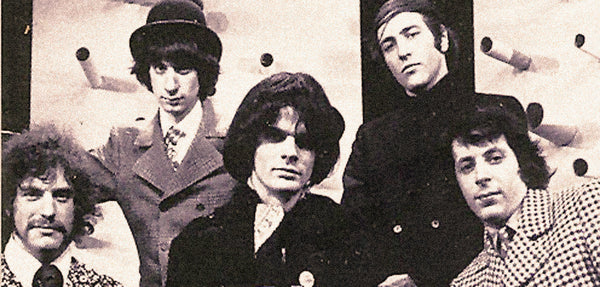The Blues Project was formed in Greenwich Village in the mid-’60s by guitarist Danny Kalb (who had played sessions for various Elektra folk and folk-rock albums), Steve Katz (a guitarist with Elektra’s Even Dozen Jug Band), flautist/bassist Andy Kulberg, drummer Roy Blumenfeld, and vocalist Tommy Flanders. Al Kooper, in his early twenties a seasoned vet of rock sessions, joined after sitting in on the band’s Columbia Records audition.
The eclectic résumés of the musicians, who came from folk, jazz, blues, and rock backgrounds, was reflected in their choice of material. Blues by Muddy Waters and Chuck Berry tunes ran alongside covers of contemporary folk-rock songs by Eric Anderson and Patrick Sky, as well as the group’s own originals. These were usually written by Kooper, who had already built songwriting credentials as the co-writer of Gary Lewis’ huge smash ‘This Diamond Ring’, and established a reputation as a major folk-rock shaker with his contributions to Bob Dylan’s mid-’60s records. And it was Kooper who played the incisive organ part on ‘Like A Rolling Stone’, the era-defining 1965 single by Bob Dylan.
Grace Slick, vocalist with Jefferson Airplane, has stated that watching the Blues Project perform at The Matrix in San Francisco in 1966 was instrumental in informing her decision to quit her band The Great Society – she was amazed that people could play like that, and they exposed the limitations of her band. Ed Denson, manager of Country Joe and the Fish, was another who became an instant fan after seeing them at the Matrix. “Their stage presence and their performance have an authority which comes from the secure knowledge that they are one of the best groups going,” he recalled. “For the three weeks that they were here they were indisputably the best band in the city.”
Although the band never achieved the kind of commercial success that was undoubtedly their due, they have nonetheless gained a greater lustre in the six decades or so since they first convened in 1965, having undergone a re-evaluation of their innovative musical approach and their consummate musicality.
Their name may have served to limit public perception of the band – although Blues-Rock formed a goodly part of their repertoire, they also incorporated Folk, Pop, Jazz and even a little Classical musical influences into their musical palette. They reserved the right to explore a bewildering, thrilling range of styles and sounds, which made for some great records and some vivid, timeless music. However, their fundamental flaw was that, despite possessing some of the greatest musical firepower, they lacked a truly distinctive vocalist, or indeed a front man that may have served to undermine their appeal, as well as a consistent source of distinctive original material.
In 1967, at the peak of their success and after the release of their third album, Live at Town Hall, the band appeared at one of their last gigs – the legendary Monterey International Pop Festival which featured Otis Redding, The Byrds, Jimi Hendrix and many more soon to be legends.
The Blues Project then split up in two different directions, with Kooper and Katz forming Blood, Sweat & Tears, and Kulberg and Blumenfeld keeping the Blues Project name and carrying on for another year and for another album, Planned Obsolescence, before changing the name of the group to Seatrain.
At the dawn of the 70s, for the joy of their old fans, Danny Kalb and Roy Blumenfeld put together a new version of the Blues Project with which they released two new albums, Lazarus in 1971, and Blues Project in 1972. The good reception eventually led to what their fans really wanted and had waited for a long time - the reunion tour of the classic line-up which culminated with their widely acclaimed appearance at the 6th Annual Schaefer Music Festival in Central Park in June of 1973, followed by the release of the live album, ‘Reunion In Central Park’.
Since Kooper had already established himself as a solo artist by that point, it was obvious that the reunion would not last long — this was, in fact, the last time The Blues Project reconvened until 1979 since when the band has reformed numerous times in various incarnations.
With thanks to Alan Robinson

